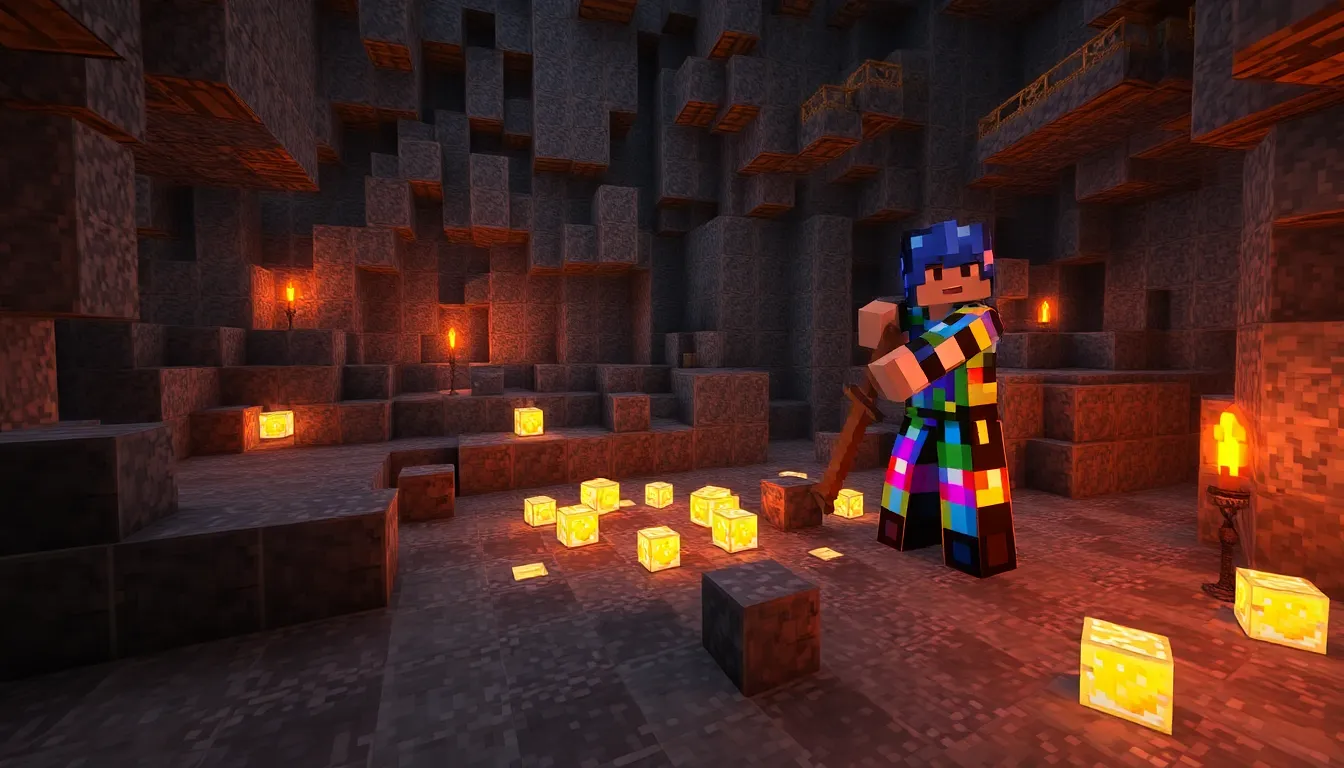Table of Contents
ToggleIron is a crucial element in the world of gaming, particularly in titles like Minecraft. Players often find themselves on a quest to gather resources, and understanding the Y-level for iron can make all the difference in their mining success. Knowing where to dig can save time and energy, allowing players to focus on building and exploring rather than endlessly searching for this essential material.
In Minecraft, iron ore generates in specific layers of the terrain, with its Y-level playing a vital role in determining where players should mine. As they delve deeper into the game, they’ll discover that the best strategies for locating iron can significantly enhance their gameplay experience. This article will explore the optimal Y-levels for finding iron, ensuring players can maximize their resource collection and enjoy their adventures to the fullest.
Understanding Iron Levels
Iron plays a crucial role in various organisms, contributing to both structural and functional properties. Understanding its characteristics and significance is vital in both gaming contexts, like Minecraft, and in health.
What is Iron?
Iron is a metallic element represented by the symbol Fe on the periodic table. It’s a vital nutrient essential for several biological processes, including oxygen transport in the blood. Iron exists in different forms, primarily as heme and non-heme iron. Heme iron, found in animal products such as meat and fish, has higher bioavailability compared to non-heme iron, which is found in plant-based sources like lentils and spinach.
Importance of Iron in the Body
Iron is essential for maintaining overall health. It facilitates the production of hemoglobin, a protein in red blood cells responsible for transporting oxygen throughout the body. Low iron levels can lead to iron deficiency anemia, resulting in fatigue, weakness, and impaired cognitive function. In adults, the recommended daily intake of iron varies based on age, gender, and life stage. For example, adult men generally require 8 mg of iron daily, while adult women need about 18 mg to support menstruation. Pregnant women require even higher amounts, approximately 27 mg, to support fetal development.
What Y Level is Iron?

Iron ore generates in specific Y-levels within Minecraft. Players optimize their mining strategies by knowing these levels, resulting in more efficient resource gathering.
Normal Range for Iron Levels
Iron ore commonly appears between Y-levels 1 and 63. The most productive range for mining iron typically lies between Y-levels 5 and 50. At these depths, players encounter iron deposits more frequently, improving the likelihood of obtaining large quantities of ore. For best results, mining around Y-level 16 often yields ample resources.
Factors Influencing Iron Levels
Various factors influence iron levels in Minecraft.
- Biomes: Different biomes contain varying frequencies of iron. For instance, iron spawns more abundantly in mountain biomes than in swamps.
- World Generation: The method used to create a world affects iron distribution. Custom worlds and amplified worlds can lead to unique underground formations.
- Game Version: Updates and patches may modify ore generation mechanics. Staying informed about the latest updates ensures players adjust their mining strategies accordingly.
By considering these factors, players can maximize their iron collection efforts, enhancing their gameplay experience.
How to Test Iron Levels
Testing iron levels offers insights into an individual’s health or gaming resource management. Various methods exist for testing iron concentration, each with distinct applications.
Types of Iron Tests
- Serum Ferritin Test: Measures stored iron in the body. This test helps assess overall iron reserves.
- Serum Iron Test: Determines the level of circulating iron. It provides real-time data on iron available for use.
- Total Iron Binding Capacity (TIBC): Evaluates the blood’s capacity to bind iron with proteins. Elevated levels may indicate iron deficiency.
- Transferrin Saturation Test: Calculates the percentage of transferrin bound with iron. This test aids in diagnosing iron overload or deficiency.
- Complete Blood Count (CBC): Provides information about red blood cells and hemoglobin levels. Anemia often correlates with low iron levels in this test.
Interpreting Test Results
Interpreting iron test results requires an understanding of reference ranges. Normal serum ferritin levels typically range from 30 to 300 ng/mL for men and 15 to 150 ng/mL for women. Normal serum iron levels usually span from 60 to 170 µg/dL.
- Low Ferritin Levels: Indicate depleted iron stores, often linked to iron deficiency anemia.
- High Ferritin Levels: Suggest iron overload, possibly due to hemochromatosis or chronic inflammation.
- Low Serum Iron: Reflects inadequate iron for production of red blood cells, often seen in anemia.
- High TIBC: Indicates a potential iron deficiency, as lower iron levels boost transferrin production.
Understanding these results allows for timely intervention, optimizing health and resource management in gaming environments.
Health Implications of Iron Levels
Iron levels significantly affect overall health. Maintaining balanced iron levels is crucial to prevent various health issues.
Consequences of Low Iron Levels
Low iron levels can lead to iron deficiency anemia, characterized by reduced red blood cell production. Symptoms include fatigue, weakness, pale skin, and dizziness. Cognitive function may decline, impairing concentration and memory. In severe cases, individuals may experience shortness of breath and heart palpitations. Pregnant women face increased risks, as iron is vital for fetal development and sufficient energy levels. Long-term iron deficiency can weaken the immune system, increasing susceptibility to infections.
Consequences of High Iron Levels
High iron levels, known as hemochromatosis, can damage organs, especially the liver, heart, and pancreas. Symptoms may include joint pain, fatigue, and abdominal pain. Increased iron absorption can lead to diabetes, heart disease, and liver disorders. Frequent blood tests help monitor iron levels, reducing the risk of complications. Over-supplementation of iron also poses risks; therefore, it’s essential to adhere to recommended intake guidelines based on age, gender, and health status.
Understanding the Y-levels for iron in gaming and its health implications is crucial for both players and individuals concerned about their well-being. By effectively mining at the right depths in Minecraft players can enhance their gameplay experience and streamline resource collection.
Simultaneously maintaining balanced iron levels is essential for overall health. Regular monitoring through blood tests can help prevent the adverse effects of both deficiency and excess. Whether in a virtual world or real life iron plays a vital role that shouldn’t be overlooked.







